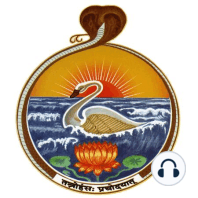54 min listen

73 – Dispassion Becomes Effortless Like a Continuous Flow of Oil | Patanjali Yoga Sutras | Swami Tattwamayananda
73 – Dispassion Becomes Effortless Like a Continuous Flow of Oil | Patanjali Yoga Sutras | Swami Tattwamayananda
ratings:
Length:
54 minutes
Released:
Feb 25, 2019
Format:
Podcast episode
Description
Lecture by Swami Tattwamayananda. Most of us are living under the strangle of mental impressions, Vrittis. We must practice detachment from memories, Smrti. Another important practice is to 1) live as much as possible in the company of spiritual aspirants – Maitri, 2) be compassionate towards good people who are struggling to make progress – Karuna., 3) admire the good - Mudhita, 4) and keep a long distance from those who may hurt our spiritual aspirations – Upeksha. We practice the attitude of the witness. We have many chances, many births to practice. Ultimately, it must become natural, spontaneous, and effortless. This requires a sense of sacredness towards our practice. Finally, we reach the first form of detachment called Vashikara, where even heavenly pleasures are eliminated. The difference between this kind of heaven and the spiritual heaven of some Abrahamic faiths is clarified. Verses: I.12, I.13, I.14, I.15
Released:
Feb 25, 2019
Format:
Podcast episode
Titles in the series (100)
13 – Neutralizing Obsessive Distractions | Patanjali Yoga Sutras | Swami Tattwamayananda by Yoga Sutras and the World of the Human Mind